How to prepare apple trees for winter?
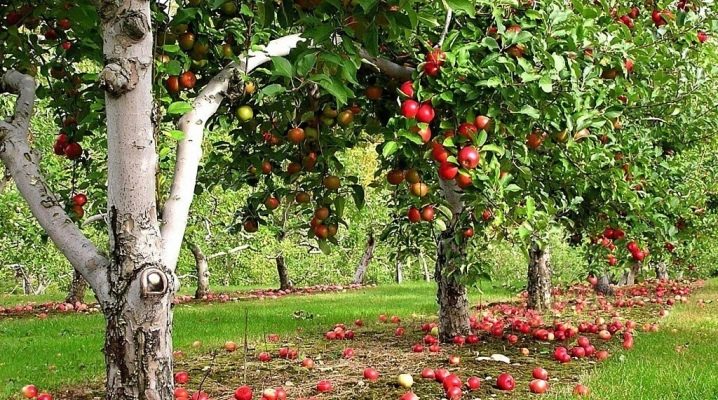
Despite the fact that apple trees are considered quite unpretentious plants, they still need proper autumn care. Timely preparation of trees for winter makes them more resistant to winter frosts, as well as increase future yields.
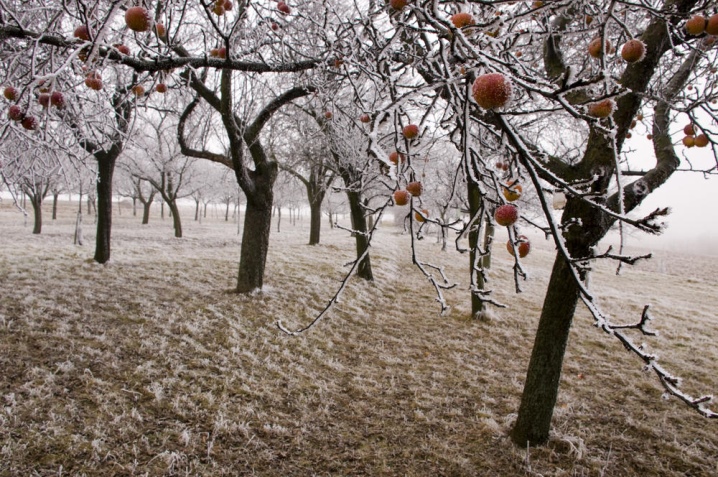
When to start preparing?
Preparation of apple trees for winter usually begins after the end of the harvest. The timing of the work can vary greatly. So, in the Urals and Siberia, apple trees are prepared for winter in September. In the Leningrad Region or the Moscow Region, trees are prepared in mid-October.
Autumn preparation takes quite a long time. Therefore, it is important to have time to do everything before the onset of the first frost.
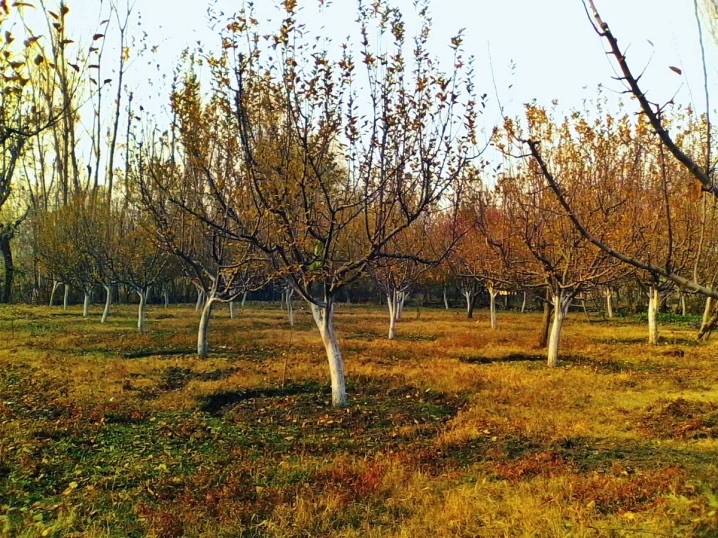
Clearing the trunk circle
Preparation for wintering begins with cleaning the area. The ground in the near-trunk circle must be cleaned of fallen leaves and branches. Various pests very often hibernate in this garbage. Therefore, we must immediately get rid of them.
If possible, the leaves should be burned. They will make excellent ash, which can then be used as fertilizer. If there is no way to burn garbage on the site, the old leaves must be taken outside of it.
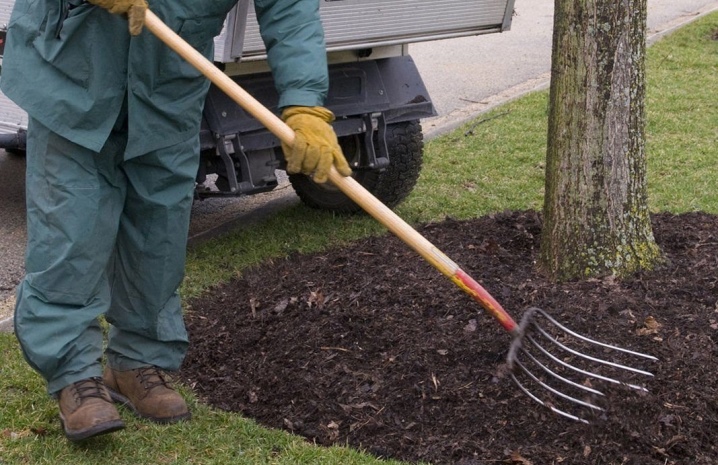
The nuances of trimming
Pruning the tree is also very important in the fall. This should be done before the first frost. After a significant drop in temperature, the branches become too fragile. Therefore, pruning the tree too late can damage it a lot.
Apple pruning consists of several basic steps.
- First, you need to remove all dry and broken branches from the tree.
- Next, you need to cut off the shoots damaged by diseases. This should be done with a sharply sharpened and disinfected instrument.
- The cut site must be well treated with copper sulfate.
- After this area dries out, it must be covered with garden varnish. This is done in order for the tree to recover faster after pruning. You can also use varnish-based paint instead.
- All cut branches, like fallen leaves, must be burned.
Pruning can be done with pruning shears or with sharp garden shears. If there is root growth next to the trunk, it must be removed.
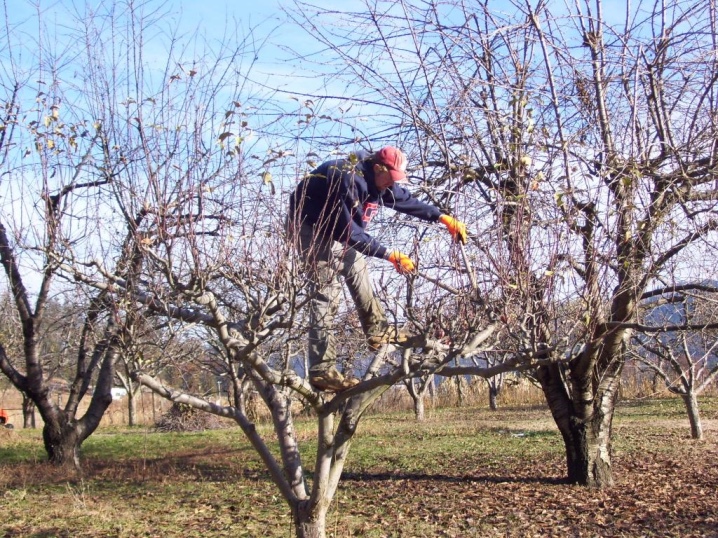
Watering
Before the onset of winter, apple trees need to be watered well. This is done for several reasons at once. First, timely moisture will help protect the roots of the tree from freezing. Secondly, this way the tree can survive any thaw.
Watering the apple trees is necessary after all the leaves have fallen from the branches. In this case, the temperature should not be below zero.
To prevent the trees from being waterlogged, a suitable amount of water must be poured under each apple tree. For watering a young plant, 50 liters of water is enough. An adult tree is watered with 100 liters. About 140 liters of liquid are poured under apple trees over 10 years old.
When watering plants, it is important to ensure that all the water is well absorbed into the soil, and not spread throughout the site. Some gardeners extend the watering process over several days. In this case, the soil is saturated evenly.
Watering old and young apple trees is worth it even if the summer was rainy. It is worth doing without watering if the apple tree grows on drained or too heavy soil, where the water table is very high.
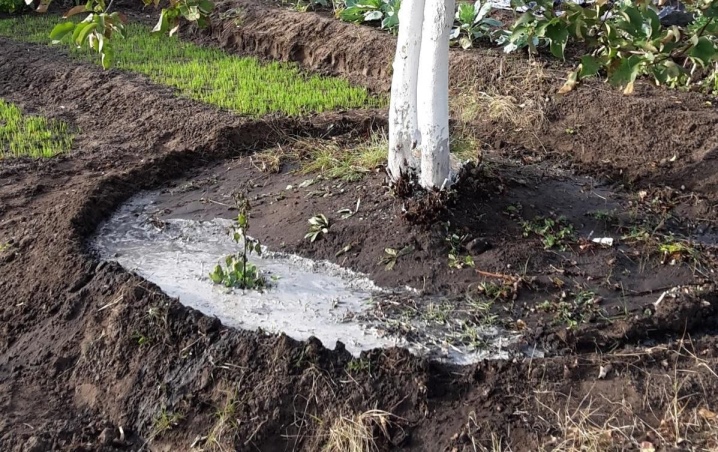
What and how to feed?
Timely fertilization also plays an important role in the process of preparing the apple tree for winter. Top dressing should be added to warm soil. In some regions this is done in September, in others - almost before the onset of winter.
In the fall, plants are fed so that they bear fruit better next year. At this time, phosphorus-potassium fertilizers are used. Trees do not need nitrogen at this time. Such dressings stimulate the active growth of new shoots. This can cause the plant to become weak and freeze in winter.
In the autumn, it is recommended to fertilize plants with liquid solutions. They work much more efficiently than dry dressing. Many gardeners use organic products to fertilize trees in their garden. The best option is rotted manure or compost. You can also fertilize the apple tree with dry wood ash.
There are also special fertilizer kits on sale now that are ideal for feeding apple trees in the fall. They are marked "for autumn". Such fertilizers can be used by beginners.
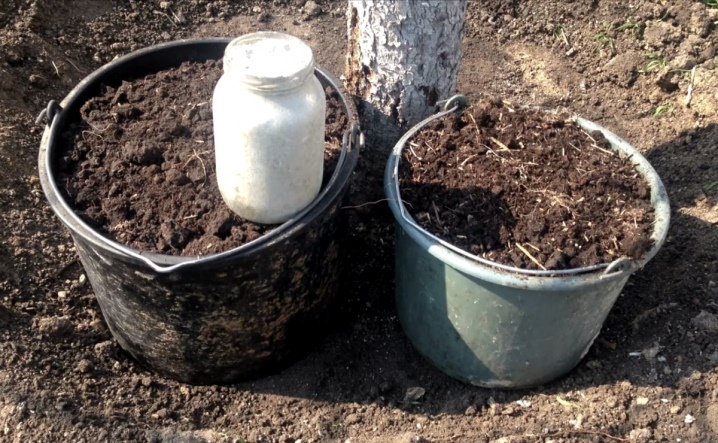
Treatment against diseases and pests
To protect the apple tree from minor pests and common diseases, it must be properly prepared in the fall.
Disease prevention
To protect the tree from fungal diseases, preparations containing copper are used. You need to cover the tree with them twice in the fall. The first procedure is carried out two weeks after harvest. Both adult trees and young seedlings should be treated with the drug. The remains of the drug must be poured over the soil under the tree. The second procedure is performed after another 10-12 days.
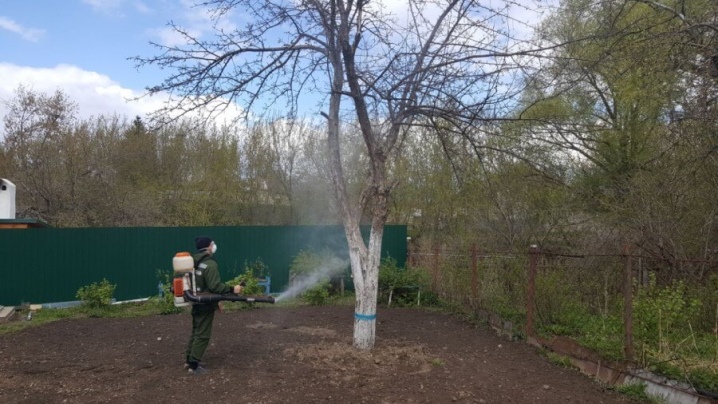
Pest control
In the fall, apple trees also need to be protected from insects. For this, high-quality modern insecticides are used. They are used two weeks after spraying the tree with an agent against fungal diseases.
Some gardeners are trying to further protect trees from small rodents and hares. The most reliable way to protect yourself is to use special covers. They need to wrap a tree trunk. In this case, the pests will not gnaw on the bark during the cold season.
Instead, the tree trunk can be treated with special commercially available mixtures. They will scare off all pests. Folk remedies can also help keep the apple tree healthy. You can plant cilantro under the apple tree. In some cases, the trunk of a tree is tied with dry wormwood. Their rich aromas ward off most pests. But this method of protecting apple trees has its own minus. The fragrant product does not last long. Therefore, it is better to use several different means to protect the tree at once.
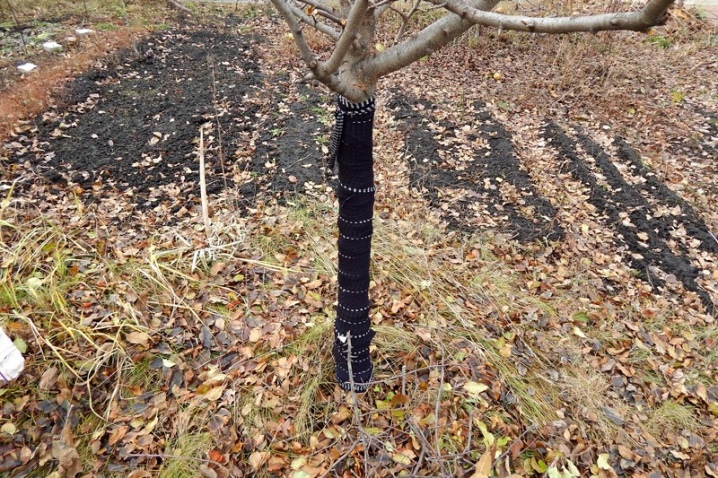
Bark processing and whitewashing
The trunk of the apple tree must be thoroughly cleaned of moss and lichens. They interfere with the normal development of the tree. Remove moss with a regular scraper. This is done very carefully. Many gardeners recommend pre-treating the bark with iron sulfate. To do this, dissolve 250 grams of dry powder in 10 liters of water. Instead of such a solution, you can also use a mixture of slaked lime and clay.
After processing the bark, the composition must be carefully cleaned from the surface with a plastic scraper or a small metal brush. Next, the tree must be treated with a light solution of copper sulfate. This will decontaminate the cleaned area.
If there are hollows on the apple tree, they must also be repaired before the onset of winter. Otherwise, small rodents can find shelter there. This is done very simply. All dirt must be carefully removed from the hollow. It must be dry and clean. Next, the hollow must be covered with plaster. It should be understood that this is a temporary solution, because over time the tree will grow.
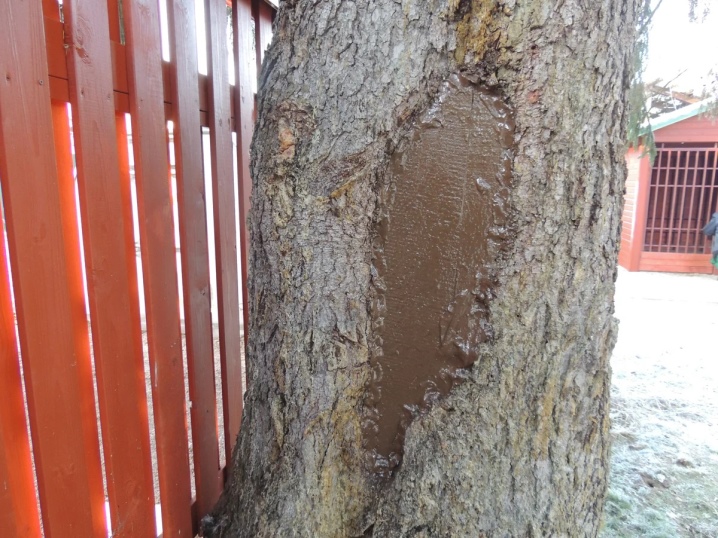
After such processing, the tree must be additionally whitewashed. This is done to protect the bark from cracks or sunburn. Various formulations can be used to treat trees. Most often, gardeners choose slaked lime or chalk diluted in water for whitewashing.In some cases, a little dry clay, soap, or even cow dung is added to the resulting mixture. A layer of whitewash usually covers the trunk of the tree down to the lowest branches.
It is recommended to whitewash the trees in November, after the end of the autumn rainy season. This should be done in dry weather. Wood can be processed manually or with a spray gun. If it rains the next day after whitewashing, the procedure will have to be repeated. After the end of the work, the rest of the solution must be poured onto the ground next to the trunk.
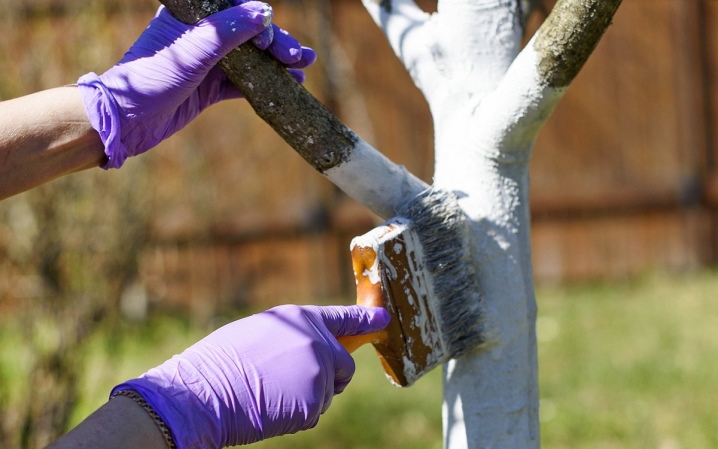
Digging and mulching
Before the onset of winter, the soil must be carefully dug up. This is done in order to get rid of pests that hibernate in the soil. In addition, digging the soil will make it easier for air to enter the ground.
Having finished with all the preparatory work, the soil next to the trunk must be carefully mulched. This is done in order to protect the roots of the plant from frost. The following materials are most often used as mulch.
- Compost. Over-matured compost perfectly protects the soil and also prevents moisture from evaporating too quickly. Using such a product for mulching the site also helps to increase the yield of the apple tree.
- Peat. This option is also perfect for warming the ground. It protects the roots from temperature extremes. Ventilate the product thoroughly before use. In some cases, it is additionally mixed with rotted manure.
- Dry bark. This raw material is used to cover the ground next to mature trees. The bark perfectly protects the roots of apple trees from the cold, as well as small pests. But it also has a minus: the bark takes nitrogen from the soil. But, if you properly care for the tree in the spring, this problem can be solved.
But fallen leaves are not recommended for this purpose. Various pests usually hibernate in them. Not suitable for mulching and dry straw. It attracts rodents, which can chew on the bark of an apple tree in winter.
The mulch layer should be fairly thick. Care must be taken to ensure that the material used does not touch the trunk of the tree.
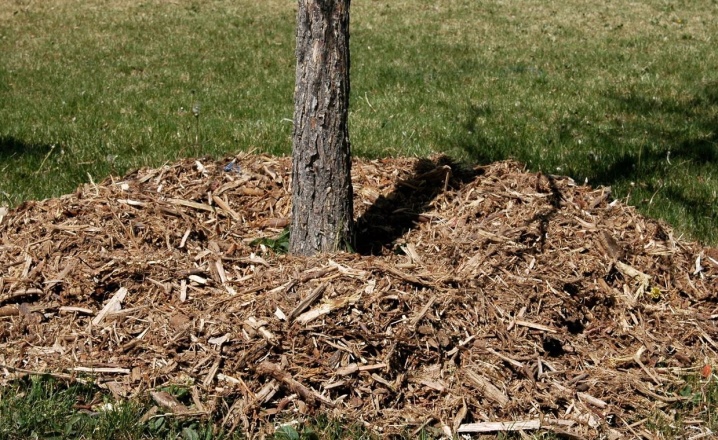
Warming
To protect apple trees from winter frosts, they must be well insulated. This must be done before the onset of frost. Before freezing, the trunk of the tree together with the lower branches must be carefully wrapped. For this, high-quality breathable materials are used.
- Sackcloth. Most often, gardeners use unnecessary fabric or burlap in their work. She needs to carefully wrap the tree trunk, while capturing the lower branches of the plant. Waste cotton can also be used in place of burlap.
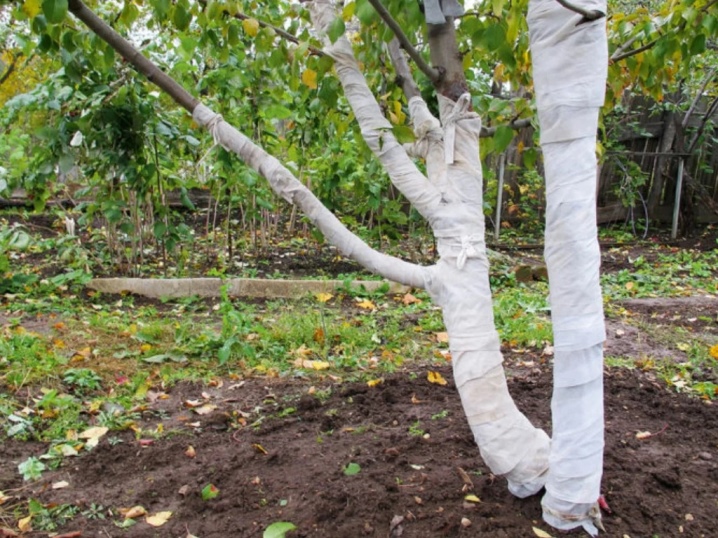
- Agrofibre. This option is the most reliable, but also the most expensive. You can buy it at a gardening store. If you tie a tree with this material, it will be protected not only from the cold, but also from small rodents.

- Plastic bottles. Collecting the right number of bottles can be done very quickly. They are used not only for plant insulation. With their noise, they are able to easily scare away hares and mice.
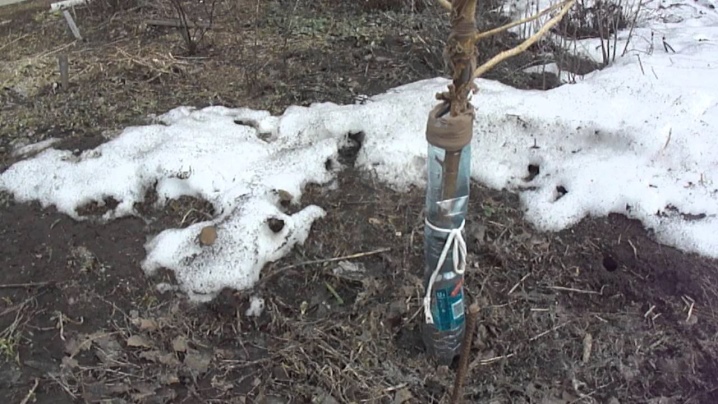
- Paper. With this material, the tree trunk must be wrapped in several layers. This is to prevent the paper from getting wet over time. For reliability, the material must be additionally fixed with a rope. In this case, gusts of wind will not tear it off.
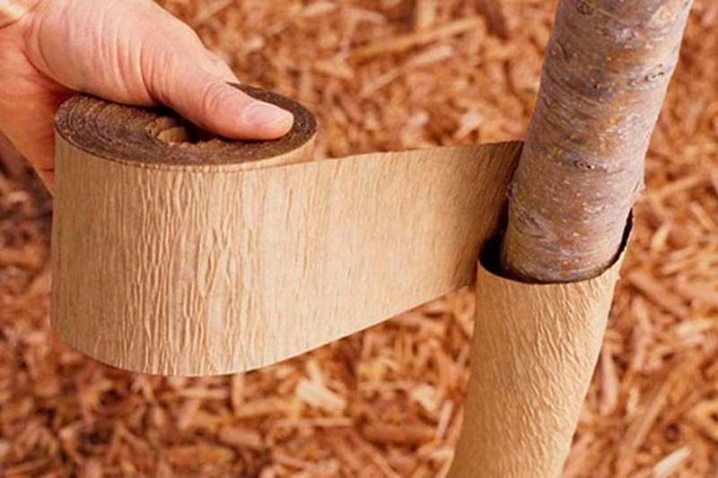
- Polyethylene film. This material is used less often as insulation. If the plant is covered with a film, it is very important to remove it on time in the spring. Otherwise, the plant will rot, which will have a very bad effect on its yield.
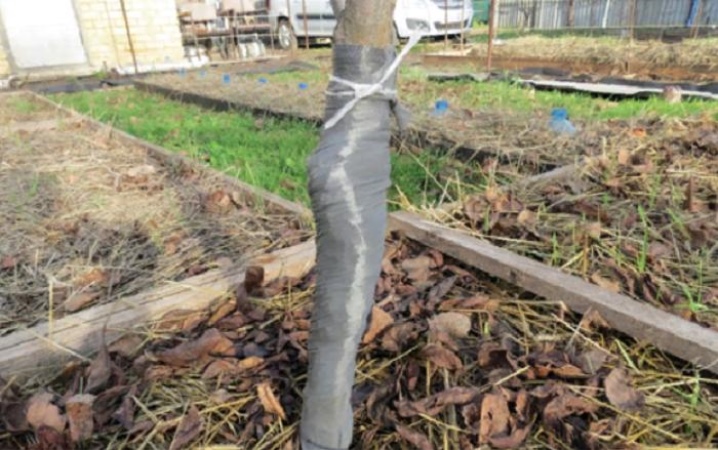
- Natural materials. Suitable for warming apple trees and natural materials: spruce branches or reeds. If they are used for protection from frost, it is worth spreading the poison next to the tree. It will scare off mice and rats.
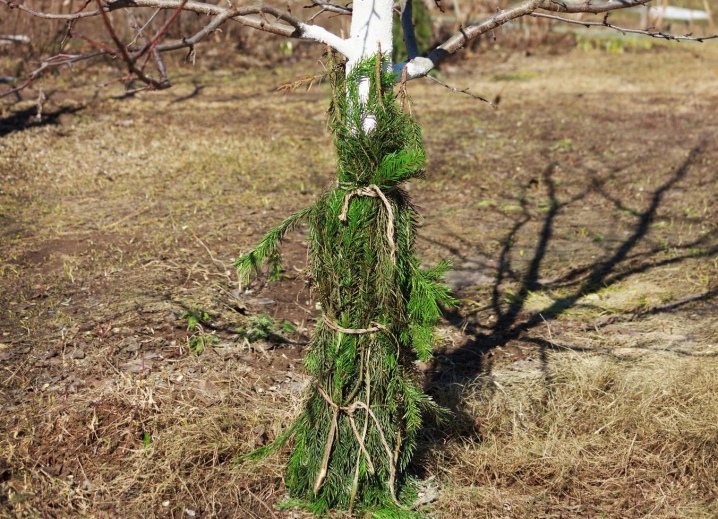
In winter, snow is used to protect trees. It is laid in a dense layer next to the trunk.This material allows you to close the roots of the tree, as well as protect its root collar from extreme cold.
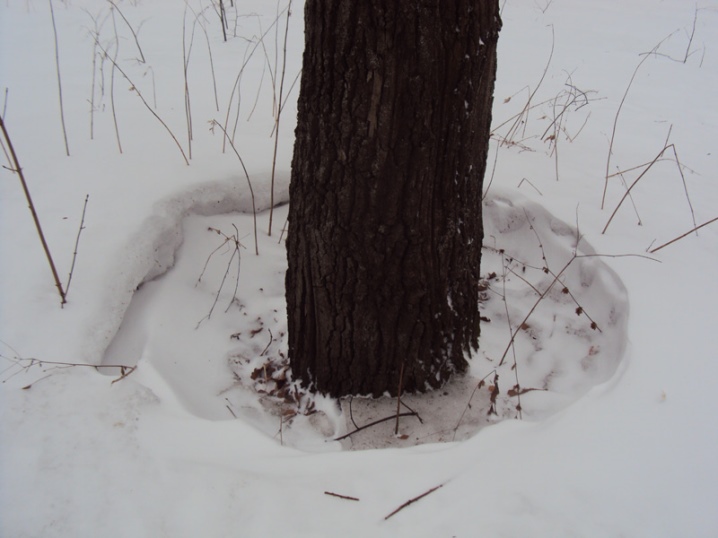
If you carry out all the autumn activities to prepare the apple tree for winter correctly and in a timely manner, the tree will develop as it should and bear fruit well.













The comment was sent successfully.